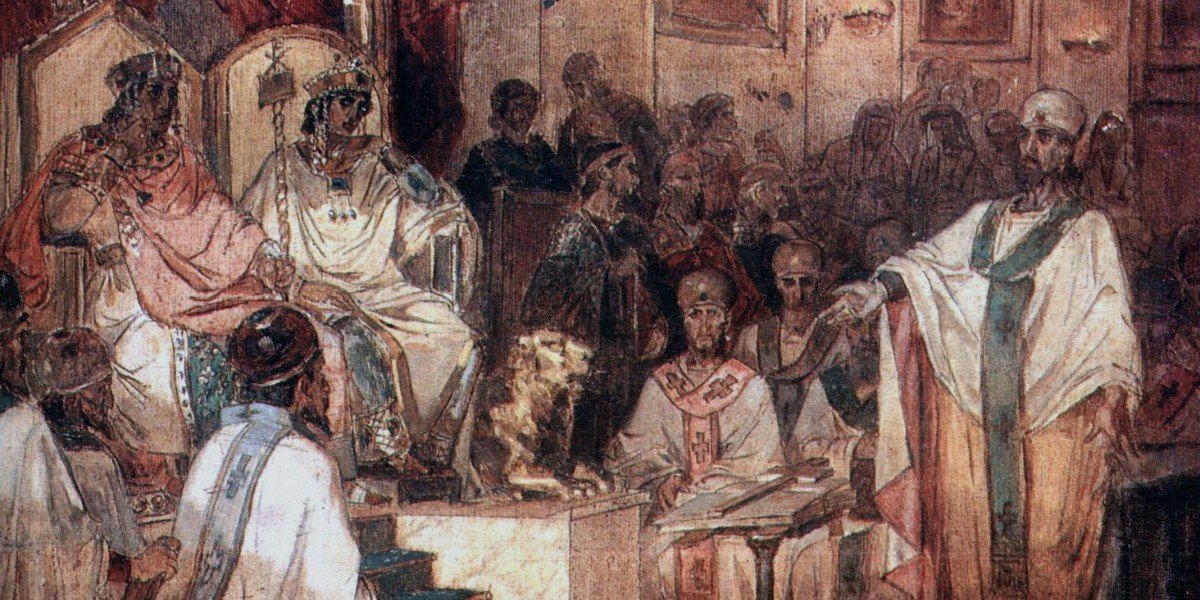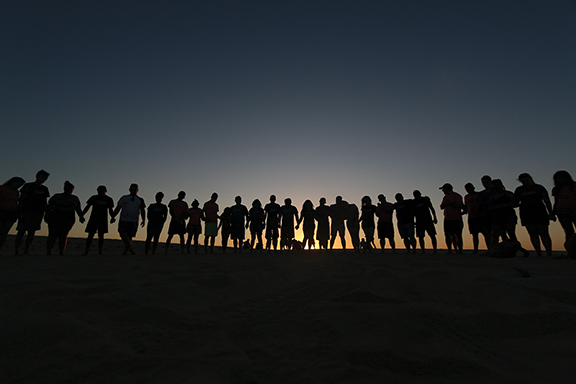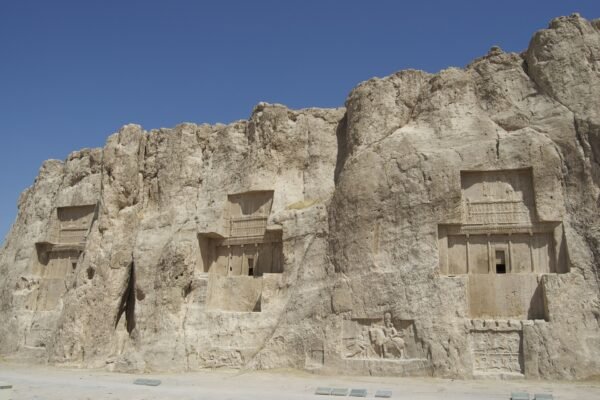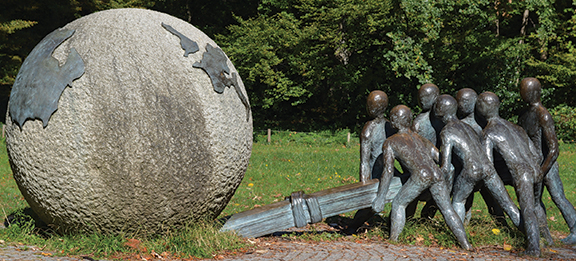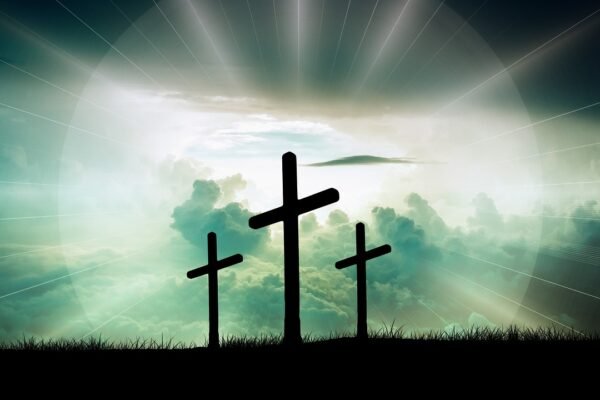The Christian orthodox doctrine of the Incarnation makes a rather stunning and unique claim. This doctrine states that the eternal Son of God became a human being, maintaining a divine nature and a human nature within one Person. He lived a physical life, died a physical death, and was resurrected. Such a claim stands out from all other religious claims.
This three part series thoroughly examines the doctrine of Incarnation. In part one we investigated the doctrine’s biblical basis. Now we will chronicle its historic development including related heresies and controversies.
Growth of the Doctrine from AD 30 – 451: Controversies & Heresies
Even though it took several hundred years for the doctrine of the Incarnation to be articulated, it was already taking shape in the New Testament.[ref]John Macquarrie, “Incarnation,” in The Blackwell encyclopedia of modern Christian thought, ed. Alister McGrath (Oxford: Blackwell, 1993), 269.[/ref] Theologian Stanley Grentz even goes so far as to postulate that the debates over how Jesus could exist as one person with two natures did not originate with the church fathers, but with the New Testament community and are born out in the titles of Jesus as “Son” and “Word”.[ref]Grentz, 391.[/ref] Whatever the case may be, by the beginning of the patristic era there was a great deal of discussion and debate regarding the mystery of the Incarnation.
In answer to an early form of Docetism[ref]Docetism was a form of Gnosticism that posited various claims, all of which pointed to the phantasmal nature of the physical form of Jesus. Basilides was an early proponent of the belief (Williams, “Incarnation,” 675).[/ref] Ignatius (died ca. AD 107) affirmed that “Jesus Christ…was of the family of David, the child of Mary, who was truly born…truly died…It was his Father who raised him again.”[ref]Alister E. McGrath, ed., The Christian Theology Reader (Oxford: Blackwell, 1998), 136.[/ref] Later, Irenaeus (AD 140-202) affirmed the basic notion of two natures in one person in an early creedal formula that stated, “he [the Word of God, the Son of God] became a human being amongst human beings…”[ref]Ibid., 93.[/ref] These views were representative of many of the early church fathers who faced various heresies in the first two hundred to three hundred years after Christ’s death and resurrection.[ref]See McGrath’s The Christian Theology Reader for a wealth of poignant quotations from the church fathers along these lines.[/ref] These heresies and the church councils held to renounce them helped to define the boundaries of orthodox thought.[ref]Macquarrie, “Incarnation,” 269.[/ref]
Human vs the Divine: Antiochian and Alexandrian
These debates were fueled by two powerful opposing schools of thought: Antiochian and Alexandrian. The Antiochian tradition often stressed the human aspects of the incarnate Christ which had a tendency to approximate Incarnation to inspiration. The Alexandrian tradition stressed the divinity of the incarnate Christ, which had a tendency to approximate the Incarnation to a theophany.[ref]Oxford, s.v. “Incarnation,” 825.[/ref] Two issues were thus at stake in the debate: the full divinity of Christ and the full humanity of Jesus.
The Arian Heresy
Perhaps the best known controversy related to the Incarnation was the one created by the Arian heresy in the beginning of the 4th century. Arius (AD 280-336) was believed to have taught the subordination of Christ based on John 14:29.[ref]Macquarrie, “Incarnation,” 270.[/ref] but was led to the conclusion that the human soul was replaced in Jesus with the Word. Thus, according to Arius, the Word, subject to limitations and sufferings, could not be wholly divine.[ref]Williams, “Incarnation,” 675.[/ref] His view was rejected at the first ecumenical council, the Council of Nicea (AD 325), where they reaffirmed the full divinity of Christ[ref]Macquarrie, “Incarnation,” 270.[/ref] with the statement that he is “of one substance (homoousion) with the Father”.[ref]McGrath, The Christian Theology Reader, 7.[/ref]
Within sixty years of this council Apollinaris of Laodicea[ref]Also spelled “Appollinarius” (see Macquarrie, “Incarnation,” 271).[/ref] was teaching that the Word replaced the nous or hegemonikon (i.e. the ruling intellectual principle) in Jesus.[ref]Williams, “Incarnation,” 675.[/ref] That is, Apollinaris believed (possibly based on John 1:14) that the Logos simply animated a physical body, rather than assumed humanity in its completeness. He was condemned at the second ecumenical council, the Council of Constantinople (AD 382), where it was asserted that the Word had assumed a complete humanity, with a soul as well as a body.[ref]Macquarrie, “Incarnation,” 271.[/ref]
So it was that by the beginning of the fifth century, the Church had ruled that Jesus was both fully divine and fully human. However, the interrelation of these two natures in one person still required a great deal of definition.
The Nestorain Controversy
All of this debate paved the way for one of the more mysterious controversies in the development of the doctrine. There are a number of questions surrounding the heresy that is attributed to Nestorius, so we will attempt to lay out the facts in an orderly fashion and be content to leave some questions unanswered.
Nestorius was a student of Theodore of Mposuestia and probably reformulated much of his theology. Among Nestorius’ theological concerns were the Antiochian consideration that there could be no essential unity between the two natures within Christ, and that the “bearer of God” title that had been given to Mary was inappropriate.[ref]Grentz, 387.[/ref] Nestorius was installed as the patriarch of Constantinople in AD 428 and soon after was obliged to rule upon the suitability of referring to Mary as theotokos (i.e. “God-bearing”). In the wake of his ruling and subsequent debates he was opposed by powerful political figures such as Cyril of Alexandria (ca. AD 375-444) and Eusebius.[ref]Erickson, 727-728.[/ref] He was condemned at the third ecumenical council, the Council of Ephesus (AD 431).[ref]Macquarrie, “Incarnation,” 271. It is now widely believed that it was probably Nestorius’ followers and opponents who developed the views associated with him and that Nestorius was most likely not a “Nestorian.” Erickson, 727.[/ref]
Monophysitism
In the wake of the Council of Ephesus and the Nestorian heresy, Eutyches became the lead figure in a new controversy. In stark contrast to the dualistic Nestorian heresy, the Monophysites taught that in Christ Jesus there was not only one person, but also only one nature. That is, that the divine nature became so joined with the human nature so as to either overtake it or to form a unique, “third nature” that was both divine and human, but essentially inseparable and indistinct.[ref]Grentz, 387.[/ref] It is not clear exactly what Eutyches believed and the details of this heresy are somewhat uncertain and sketchy.[ref]For a compelling account of the controversy see Erickson, 728-730. It is noteworthy that Monophysitism was actually defended as orthodox (and the idea of two natures after the Incarnation anathematized) at a council meeting in Ephesus (AD 449) although this meeting was not held under the proper imperial authority and eventually came to be referred to as the “Robber Synod”. (Erickson, 729-730.)[/ref] However, this controversy paved the way for the fourth ecumenical council to be held in Chalcedon where the definitive viewpoint of the church would be established for the next fifteen centuries.
The Council of Chalcedon (AD 451)
It should be clear by now that the Church was in need of a definitive statement concerning the relationship between the two natures within the one person of Christ Jesus. What was produced at the fourth ecumenical council, the Council of Chalcedon (AD 451), was destined to become “the classic statement of orthodox Christian belief in the Incarnation”.[ref]Macquarrie, “Incarnation,” 271.[/ref] At the Council of Chalcedon they sought to hold the Antiochian and Alexandrian viewpoints in proper balance and create an answer to the various heresies that had been addressed in the past.[ref]Oxford, s.v. “Incarnation,” 825.[/ref] Among the assertions of the Council were:
“We…confess our Lord Jesus Christ to be one and the same Son, perfect in divinity and humanity, truly God and truly human, consisting of a rational soul and a body, being of one substance with the Father in relation to his divinity, and being of one substance with us in relation to his humanity…[he] is to be acknowledged in two natures, without confusion, without change, without division, and without separation…each nature is preserved, and concurring into one Person and subsistence…”[ref]McGrath, The Christian Theology Reader, 148. It is worth reading the entire statement for a more complete understanding of the precision, and the limitations, of the Council’s pronouncement.[/ref]
This was powerful a statement. But as much as it answered many of the preceding heresies, such a definition only provided boundaries in which the debate could indefinitely continue.[ref]Oxford, s.v. “Incarnation,” 825.[/ref] Millard J. Erickson is right when he asserts that, “In a sense, Chalcedon is not the answer; it is the question.”[ref]Erickson, 730.[/ref] That is, by defining Jesus Christ as having two natures in one person the question was still left open as to how such an arrangement could take place and what the implications were.
Part of the weakness of the Chalcedonian definition is that it said more negatively than positively. It asserts that the two natures were “without confusion, without change, without division, and without separation,” but it does not comment a great deal on the integration, adaptation, and inevitable (although limited) unity of the two natures.[ref]Ibid., 730.[/ref] This ambiguity resulted in continuing debates for the next fifteen centuries continuing to the present day.
Continued Debate from AD 451 to the Enlightenment
The Scholastics
After the Council of Chalcedon questions arose as to the number of wills within the person Jesus Christ. This debate became particularly pronounced in the 6th and 7th centuries. The essential question was, “Did the duality of natures in the Incarnate Christ entail a duality of wills?”[ref]Oxford, s.v. “Incarnation,” 825.[/ref] According to the monothelites (Gk. mono = one, thelo = will) the answer was no. For them there could only be one will, because there was only one person. Others were less willing to fuse the two wills, stating that the two natures necessitated the existence of two wills. Interestingly enough, both groups claimed dependence on the Chalcedonian definition. At the sixth ecumenical council (AD 680), the case was decided in favor of those who posited the notion of two wills.[ref]Grentz, 388-389.[/ref]
Another significant debate arose later among the Scholastics. Thomas Aquinas (ca. AD 1225-74) and Duns Scotus (ca. AD 1265-1308). The first question was whether or not the divine Word “adds” anything to the particular human nature of Jesus. The second question asked if the Incarnation would have taken place without the fall of man. Aquinas and his followers (known as Thomists) replied in the affirmative to both questions. Scotus and his followers (known as Scotists) answered no to both questions.[ref]Williams, “Incarnation,” 675.[/ref] There were no official church rulings on either of these issues.
The Reformation
Further refinements took place during the reformation. Martin Luther (AD 1483-1546) and John Calvin (AD 1509-1564) took up the patristic debate over the communication idiomatum (the communication of the divine attributes within the person of Christ).[ref]As was noted in the prior section on Kenosis this debate resulted in varied forms of “kenosis theory”.[/ref]
In the Lutheran school of thought, for the nature of Christ to remain divine his divine attributes must have been communicated to the person of Jesus. Thus, Jesus Christ enjoyed full divinity, including omnipotence, omnipresence, and omniscience.[ref]An interesting application of this foundational belief is that because the human Jesus enjoys the divine attribute of omnipresence his body is truly present in the Eucharist (see Grentz, 389-390).[/ref]
Calvin and his followers opposed this view, stating that the divine attributes were not fully communicated to Jesus and that he sometimes operated from his divine will and other times from his human will. The Calvinists feared that the Lutherans were coming dangerously close to the Eutychian heresy, while the Lutherans were concerned that the Calvinists were not far from the Nestorian heresy.[ref]Grentz, 389-390.[/ref] The Church has never made an ecumenical ruling to decide this issue, a fact which Stanley J. Grentz sees as a positive recognition of the limitation of human understanding to conceive of the relationship between the two natures.[ref]Ibid., 390.[/ref]
Similar debates continued as to the exercise of divine powers by the incarnate Word. The Geissen school argued for a real self emptying abandonment of divine powers, while the Türbingen school saw it more in terms of a concealment of divine powers. These debates began to lay the groundwork for later discussions concerning the historical and psychological plausibility of the Incarnation.[ref]Williams, “Incarnation,” 675.[/ref] But none of these debates paralleled the effect that the Enlightenment has had on theological discussions concerning the Incarnation.
The Effect of the Enlightenment
The Enlightenment (ca. AD 1750) brought both historical criticism of biblical sources and the philosophical criticism of supernaturalism and the entire conceptuality which the church inherited from the patristic age. As a result discussion of the doctrine of the Incarnation was re-opened after over a thousand years of general agreement.
In the 1800’s there arose a serious challenge to Incarnational Christology, especially among the liberal theologians. In many ways Friedrich Schleiermacher (often called the father of modern theology) led the charge in reshaping the Church’s understanding of Christ. He challenged the “two nature” teaching of Chalcedon as incoherent and sought a Christology that looked at the historical man (Jesus of Nazareth) first, rather than at the eternal Son (the Logos). Despite the resistance of such formidable adversaries as Søren Kierkegaard and Karl Barth, his influence has remained strong in both Protestant and Catholic circles. Adherents to a “post-Schleiermacher” Christology do not believe that they have given up a belief in Incarnation, but rather have sought one that is more true and biblical.[ref]Macquarrie, “Incarnation,” 271-272. Macquarrie mentions J.A.T. Robinson and J.D.G. Dunn as current advocates of such a “non-incarnational” Christology.[/ref]
Looking Ahead
From its New Testament infancy, through the patristic era, the ecumenical councils, the Scholastic era, to the Reformation and the Enlightenment, the doctrine of Incarnation has been a perpetual topic of debate. The Council of Chalcedon made a valiant effort to put an end to the disagreements about the nature of Christ’s divinity and humanity, but ultimately, the Council’s assertions only engendered more debates.
Now, having explored both the doctrine’s biblical foundation and the resulting debates, the final part of this series will explore this doctrine’s current standing among evangelicals.
As a believer who has been recreated to lead through Christ, it is important to recognize that you are also a theologian. Theology gives you the tools to examine your own beliefs about God, and also helps you communicate Christian beliefs in a meaningful way that others can understand. Watch for part three of this series, but in the meantime, you can become better equipped in your daily influence for Christ by taking advantage of the following resources:
- Read Why You Should Care About Theology.
- Read other articles in our God Thoughts category.
- Join Artios Christian College‘s diverse community of students and instructors who recognize the significance of theological tools in their development as Christian leaders. LEA 111 Essentials of Vibrant Leadership is a great introductory course.

